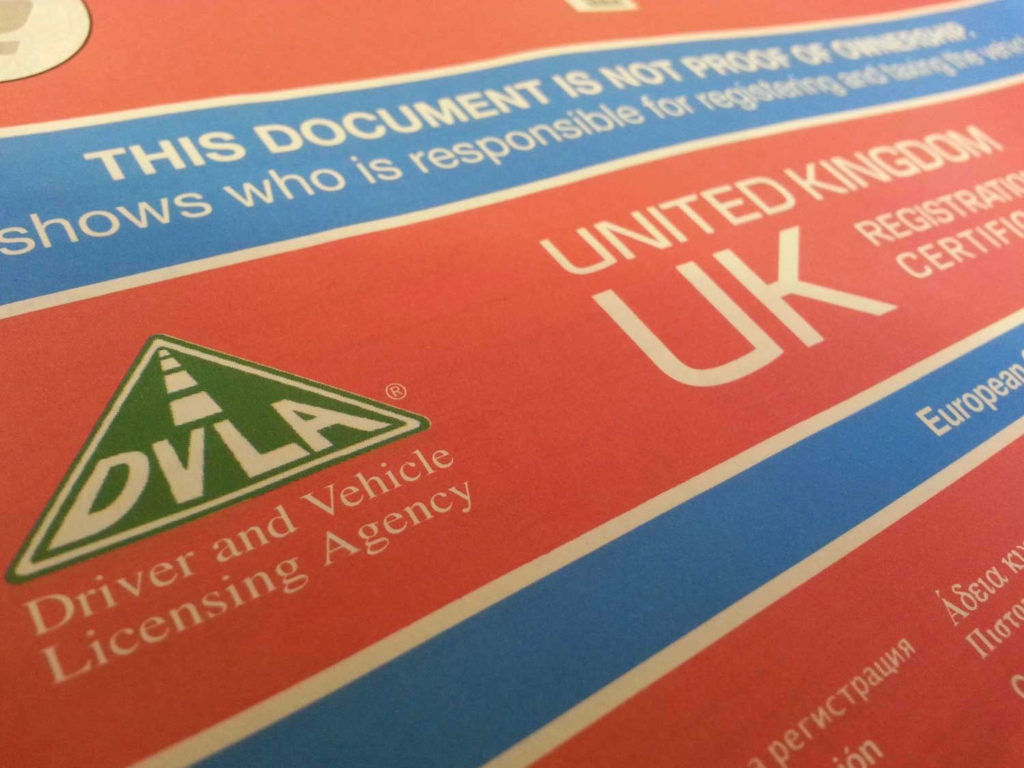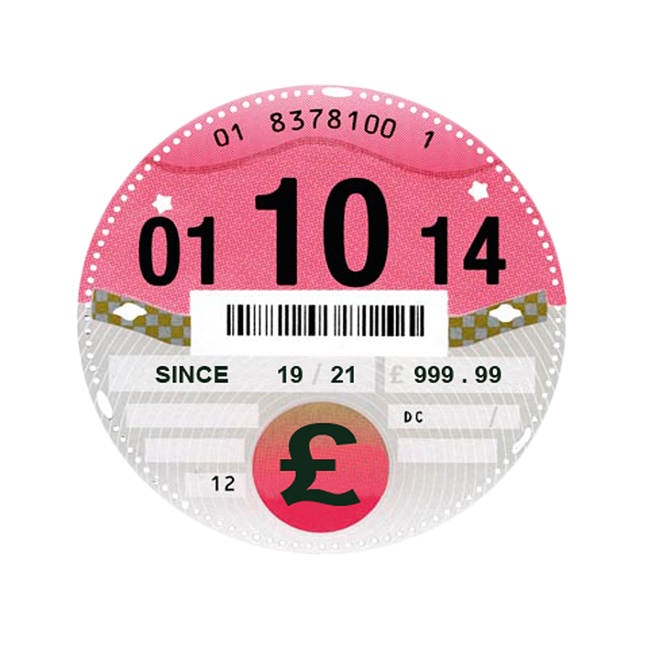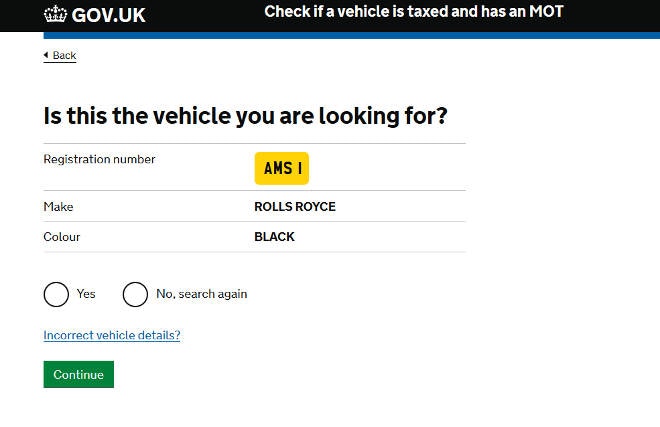The DVLA and Selling Your Car
If you buy, sell, or own a car in the UK, you should be familiar with the Driver and Vehicle Licensing Agency (DVLA). It’s particularly important to understand what you need to do regarding the DVLA and selling your car.
The role of the DVLA includes registering driving licences across Great Britain and retaining the details of cars across the whole of the UK. That includes the registered keeper of each vehicle and who is responsible for paying the vehicle road tax.

If you don’t keep your information up to date with the DVLA, you may be liable for taxes and legal penalties on a car you’ve already sold. Even if you can prove you weren’t speeding or driving uninsured, you can still be fined up to £1,000 for not supplying up-to-date information.
The good news is that the process for informing the DVLA when you have sold your car is quick and simple. And because the steps are so easy, buyers can have complete confidence when they purchase your car.
DVLA and selling your car explained
- What is the DVLA?
- What you need to tell the DVLA when you’ve sold your car
- How to get a tax refund from the DVLA
- How to get information on a car from the DVLA
- How to inform the DVLA when you sell a car
- How to check when an MOT is due
- How to inform the DVLA if you want to keep your registration plate/ custom plate

What is the DVLA?
The Driver and Vehicle Licensing Agency has only been around since the middle of the 20th century. In fact, from 1903 until 1965 it was down to Borough and County councils to keep track of the motor vehicles throughout Great Britain.
That worked fine when there were few cars on the roads. But as ownership grew and travel increased, there were obvious problems with checking details of each vehicle. So in 1965, the DVLA was introduced.
With headquarters in Swansea, the DVLA is responsible for both the database of drivers in Great Britain and vehicles across the whole of the UK. In Northern Ireland, drivers are registered with the Driver and Vehicle Agency.
The DVLA also registers civilian vehicles used in Germany by the British Forces. And diplomatic and consular vehicles used by the Foreign Office.
The DVLA is responsible for:
- Recording driver endorsements, disqualifications and medical conditions
- Issuing photocard driving licences
- Issuing vehicle registration certificates to vehicle keepers
- Taking enforcement action against vehicle tax evaders
- Registering and issuing tachograph cards
- Selling DVLA personalised registrations
- Helping the police and intelligence authorities deal with crime
- Providing anonymised data to those who have the right to use the service
With more than 40 million vehicles in their database, the DVLA records can help car buyers make their next purchase with confidence.
The database helps with identifying stolen or cloned registration details, and making sure cars are taxed correctly as well as having a valid MOT it also holds ownership details. You can also check the current and past registered keepers to make sure you’re dealing with the actual owner of the car.
Other details held by the DVLA include the year of manufacture, engine capacity, fuel type, colour, and the tax rates you’ll pay as an owner.
When you’re selling a car, you can let potential buyers check the details match the vehicle. But don’t share your logbook document reference number, or any copies and photos of your V5C as that could be used to obtain a duplicate copy.
Informing the DVLA when you have sold your car
Sold your car? It’s extremely important to inform the DVLA as soon as the transaction has happened, otherwise, you will still be on record as the registered keeper of the vehicle. And that means you’ll be responsible if the car isn’t registered properly and taxed.
It also means that any speeding fines and other legal penalties linked to your buyer will be coming through your letterbox for the car you have just sold.
The DVLA must know your car has been sold or you will be liable for anything the new owner should be paying. It’s also worth remembering this because you could be fined up to £1,000 for not informing the DVLA of the sale.
It’s always vital to tell the DVLA as soon as you sell your car.
The process you need to follow will be slightly different if you’re selling your car privately or otherwise. Both options need details from your V5C logbook, and if you’ve lost it (or need more info), we’ve compiled the ultimate guide to the V5C here.
You can find information on how to get a replacement V5C there, or you can simply sell without a V5.

If it’s a private sale, you’ll need to fill in Section 6 of your V5C document for the new keeper, including their name and address if they live in Great Britain.
You’ll also need to duplicate the same information in Section 10 and make sure you also keep a record of the name and address of the new owner somewhere separately in case you need it.
Both you and the buyer need to then sign Section 8. The new owner gets to keep Section 10, while Sections 1-8 need to be posted to the address below:
DVLA,
Swansea,
SA99 1BA.
If you’re selling or transferring your vehicle to a motor trader, insurer, or dismantler you need to fill in Section 9 instead. In a reversal of the private procedure, you just send the Section 9 form to the DVLA, Swansea, SA99 1BA. The trader gets to keep the rest of the V5C logbook.
Whether you’re selling to a private individual or an automotive business, you should receive an acknowledgment letter to confirm you are no longer the registered keeper of the vehicle within four weeks.
If it doesn’t arrive within a month, you then need to contact DVLA Customer Enquiries on 0300 7906802

You can also inform the DVLA that you’ve sold your car, or transferred or bought another vehicle online via the UK Government website. But you’ll still need your V5C logbook to hand and the service is only available from 7AM to 7PM.
How do I get a tax refund from the DVLA after selling my car?
Since October 2014, road tax doesn’t carry over when you sell your car. So the new owner has to buy new road tax before they can legally drive away, any insurance will also be invalid without tax.
And it also means you might be selling your car with unused road tax remaining. When you tell the DVLA it has been sold or transferred, your vehicle tax should be cancelled automatically. If you pay by Direct Debit this should also stop straight away.

In 2017, the DVLA refunded more than £360 million in vehicle tax after vehicles were sold.
You should then get a refund cheque sent to the name and address on the vehicle logbook. The refund will be for any full months left on your vehicle tax, so if you sell your car on the 15th of the month, you won’t get money back for the remaining 15 or 16 days.
If the vehicle tax refund cheque doesn’t arrive in six weeks, you’ll need to contact the DVLA. Registering the sale online tends to mean your refund arrives more quickly, usually in 3-5 working days.
Get information on my car from the DVLA
You can access information from the DVLA on any car registered in the UK. Access from the DVLA includes:
- Vehicle information including when the current tax and MOT expires, the engine size, colour, year of manufacture, the date it was first registered and the tax rate.
- Current and previous registered keepers of a vehicle.
- The MOT tests for a vehicle since 2005, including whether it passed or failed, the recorded mileage, where the test was done, and if any parts failed or had minor problems.
- Whether a vehicle, part or accessory has been recalled for a serious safety problem.

You can find out the vehicle details and information on any car easily online by entering the registration number of the car.
This is useful if you need to check how much vehicle tax is left to be refunded. Or if you want to quickly check how long is left for the MOT on your car or a car you want to buy.
It can also be useful if, for example, if you can’t find your V5C or remember all the details. You might want to start advertising it before your replacement logbook arrives. In which case, you can confirm the engine size, colour and more online.
If you want more details on current and previous MOT tests, then you can also find this out on the DVLA website with just the registration number. The details include the MOT test number, test location, recorded mileage and expiry date.

The MOT history also includes the details of any Major Defects in the event of the car failing. And any advisories recorded whether for both passes and failures. So you’re aware of what may need monitoring or repair in the near future.
This same check for MOTs also includes any safety recalls from the manufacturer. Safety issues can also cover parts and accessories recorded as being fixed to the vehicle. It’s worth knowing if there was a recall on your car. And if the work was carried out to fix it.
If a potential buyer knows about a relevant safety recall for your car, you need to be able to reassure them it’s been solved.
Finally you can check current and previous registered keepers, although this is only available from the DVLA by post. And you need a legitimate reason, such as tracing a car following an accident or tracking down the owner of an abandoned vehicle.
Contacting the DVLA to let them know you’ve sold a car
You can contact the DVLA to let them know you’ve sold your car by completing the relevant section of the V5C logbook for a private sale (Sections 6 and 8). Or for a sale or transfer to a motor trader, insurer, or dismantler (Section 9).
You then need to post the correct section to the DVLA, Swansea, SA99 1BD.

You can also inform the DVLA of the sale or transfer of your car online by the Gov.uk website. However, you can’t use the service if you’ve already sent your logbook by post. Also, it only operates from 7am to 7pm each day.
Use either method to inform the DVLA about your car sale, and you should get an acknowledgement letter within 4 weeks. This will confirm you’re no longer the registered keeper of the vehicle. So keep it somewhere safe.
If you have questions or concerns about the DVLA and selling your car, you can contact them on the phone, via email or letter. To find the right details, simply go through the quick set of questions on the Contact DVLA page.
The current details for DVLA registration enquiries are to use the DVLA email service, phone Customer Enquiries on 0300 790 6802, or by letter to Vehicle Customer Services, DVLA, Swansea, SA99 1AR.
How do I check when my MOT is due with the DVLA?
If you have misplaced or lost your last MOT test certificate, you can still check when it expires online via the DVLA. You can see the full MOT history for tests in England, Scotland, and Wales since 2005 at the same time.
You’ll simply need the vehicle registration number. And test results are uploaded as soon as the MOT centre has recorded the result. To see the test location you’ll need to wait at least 14 days and have the 11-digit number for the car from the V5C logbook.
Start by going to the page to Check the MOT history of a vehicle and click on the ‘Start Now’ button.

You’ll then see some of the details of your car. You can expand the MOT history section by clicking on the down arrow to see all the recorded details.
You can click on ‘view test location’ next to each result to enter your 11-digit V5C Document Reference Number. You can then see exactly where the car has been tested each time.

And you can also click on the down arrow to expand the section for Outstanding vehicle recalls.
How to inform the DVLA if you want to keep your registration plate / custom plates
If you currently have a private personalised reg plate, you may want to keep it to use later or swap it to another vehicle.
Typically, the car you sell will be automatically reassigned with the original registration number it had when the personalised plates are taken off. To do that it must have been registered with the DVLA. It should also be able to move under its own power and be of a type that needs an MOT.
Your car will also need to have been taxed or had a SORN in place continuously for the past 5 years. And if you have declared your car SORN for more than 5 years, you’ll need to tax it before starting the process.
You can apply to take off and retain your custom number plates by post or online. You may also need to have your car inspected before the process is finished.
The online process to take a registration number off a vehicle is open from 7AM to 7PM. And if you don’t need an inspection, the change will happen immediately. You can also assign the number to another car straight away using the reference number you get after you apply.

By post, the registration number will be removed within two weeks. You’ll need to send a completed form V317 ‘transfer or retain a vehicle registration number’. And either the vehicle logbook (V5C), or the new keepers supplement with a completed V62 ‘application for a vehicle registration certificate V5C’.
Both the online and postal methods require an £80 transfer fee to be paid.
When you successfully remove the private personalised registration number, you’ll be sent a V778 retention document. This will give you the right to assign that customer number plate for up to 10 years. But you’ll need to renew that right before it runs out.
The right to use your private registration number is also lost if you sell or destroy your vehicle before you get the V778. If you decide not to use your personalised number plate, you can give up your right to it. You can apply to get a refund of the £80 cost, as long as it’s not been assigned to any vehicle.

Ready to sell?
Need to sell your car, or want to understand more about documentation or maintenance? Check out more of our guides here, covering everything from the paperwork you need when buying and selling, to various notices you may need to file with the UK’s driver and vehicle licensing agency.
- Value my car – online car valuation
- How to sell a car to a dealer
- Sell to an online car buyer
- Sell to a car buying website
- How to sell a car privately
- How to buy or sell a private number plate
- V5C: the ultimate guide to the V5 logbook.
- What documents do I need to sell my car?
- The ultimate guide to car tax
- How to transfer car ownership
- Print a reg plate for your car
- Is your car worth less after an accident?